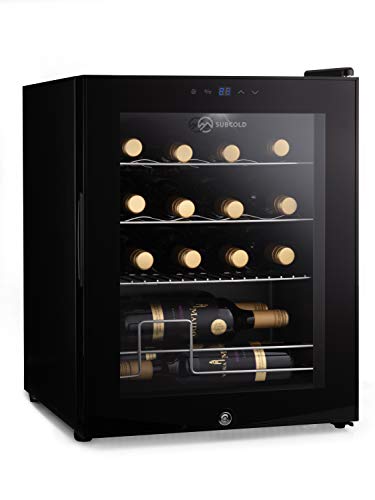The Essential Guide to Wine Cellar Fridges: Keeping Your Wines at Their Best
When it comes to wine appreciation, the storage conditions can be just as crucial as the selection itself. For wine enthusiasts, a dedicated wine cellar fridge is not simply a high-end; it can be thought about an essential investment. This short article explores what a wine cellar fridge is, its advantages, how to choose the ideal one, and responses typical questions associated with wine storage.
What is a Wine Cellar Fridge?
A wine rack fridge, likewise referred to as a wine cooler, is a home appliance particularly developed to save wine at ideal temperature levels. Unlike conventional fridges, which can be too cold and fluctuate in temperature, wine fridges are designed to keep a consistent climate appropriate for maintaining the quality and flavor profiles of various wines.
Key Features of Wine Cellar Fridges
- Temperature Control: Most wine fridges have adjustable temperature level settings to accommodate different kinds of wine (red, white, gleaming).
- Humidity Control: Proper humidity levels (around 60-70%) are important for preventing cork damage and maintaining general wine quality.
- UV Protection: Many wine fridges feature tinted glass doors to protect your wine from harmful ultraviolet rays that can weaken its taste.
- Vibration Prevention: Wine fridges are designed to minimize vibrations, which can disturb sediment and affect taste.
- Shelving Options: Various shelving styles accommodate various bottle sizes, including standard Bordeaux, Burgundy, and Champagne-shaped bottles.
Why Invest in a Wine Cellar Fridge?
Purchasing a wine cellar fridge uses several benefits, particularly for those who take their wine intake seriously. Here's a closer take a look at these benefits:
- Optimal Storage Conditions: Maintaining the best temperature level and humidity levels makes sure that the wine ages with dignity.
- Space-Efficient: Many wine fridges are compact and developed to suit areas like kitchens, basements, and dining locations.
- Visual Appeal: A wine fridge can boost your home decor, serving as an elegant display screen for your wine collection.
- Convenient Access: A devoted wine fridge permits you to have easy and fast access to your preferred selections without searching through a standard fridge.
- Preservation of Quality: By keeping your wine in the right conditions, you can protect its quality for a more prolonged duration and enhance the tasting experience.
Selecting the Right Wine Cellar Fridge
When selecting the perfect wine fridge, several key elements need to be considered:
1. Size and Capacity
Picking the ideal size depends upon your collection and offered area. Wine fridges been available in various capacities, from small units that hold a dozen bottles to large models that can save 200 or more.
2. Temperature level Zones
If you have a varied wine collection, search for a dual-zone fridge. These designs permit you to preserve different temperature levels for red and gewurztraminers all at once.
3. Style and Style
Wine fridges come in various designs. Whether you choose a freestanding unit or an under-counter option, think about how the visual will complement your home.
4. Noise Level
Vibration and noise can affect the quality of wine. Search for designs specifically designed to reduce vibrations and sound.
5. Spending plan
Costs for wine fridges can differ considerably. Establish your spending plan ahead of time and assess what features matter most to you.
| Feature | Importance | Notes |
|---|---|---|
| Temperature Control | Crucial for wine integrity | Adjustable settings for different wine types |
| Humidity Control | Avoids cork damage | Suitable humidity levels between 60-70% |
| UV Protection | Preserves flavor | Tinted glass doors are a benefit |
| Vibration Prevention | Maintains sediment stability | Important for aging wines |
| Design | Visual appeal | Select a style that fits your home decor |
Frequently Asked Questions (FAQs)
1. Can I utilize a regular refrigerator to save wine?
While it is possible to save wine in a routine refrigerator, it is not recommended due to the colder temperature level, which can shock and ruin the wine's taste. Regular fridges also usually have lower humidity levels, which can dry out corks.
2. What is the ideal temperature for saving red wine?
Red wine is normally best stored at temperature levels between 55 ° F to 65 ° F (13 ° C to
18 ° C). 3. How typically should I examine the temperature in my wine fridge?
It is advisable to monitor the temperature level routinely, particularly if your wine fridge does not have a built-in digital display screen. Monthly checks can help ensure constant storage conditions.
4. Can I store opened bottles of wine in a wine fridge?
Yes, wine fridges are ideal for saving opened bottles, as they help preserve the ideal temperature and humidity, slowing down oxidation and preserving flavor.
5. For how Large Wine Fridge UK be stored in a wine fridge?
A lot of wine fridges can protect the quality of wine for a number of years, depending upon the type. Red red wines can normally age longer than white wines.
Investing in a wine rack fridge is a sound choice for wine lovers who aim to improve their wine-drinking experience. Comprehending how to choose the right system based on size, temperature control, design, and budget plan can make a considerable distinction in wine storage and appreciation. By maintaining optimum conditions, wine lovers can enjoy their favorite varietals at their best, ensuring the long-term quality and joy of each bottle. Whether you are a budding collector or a skilled connoisseur, a wine cellar fridge is a worthwhile addition to your home.

